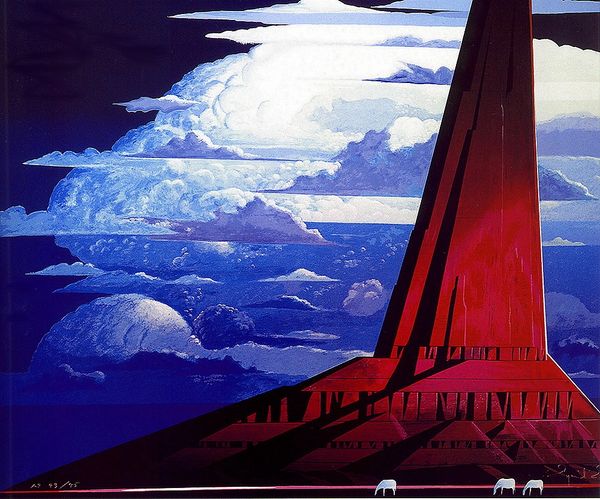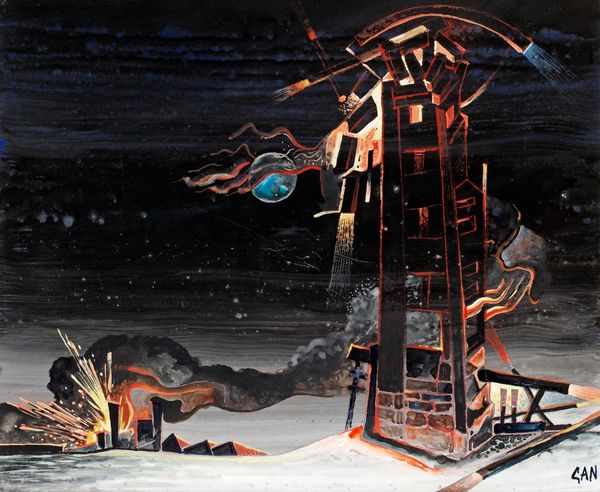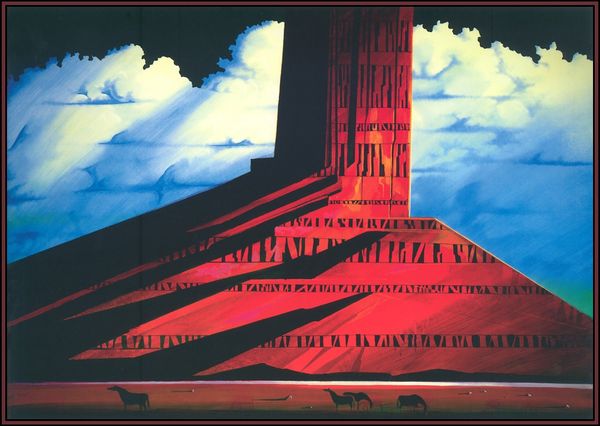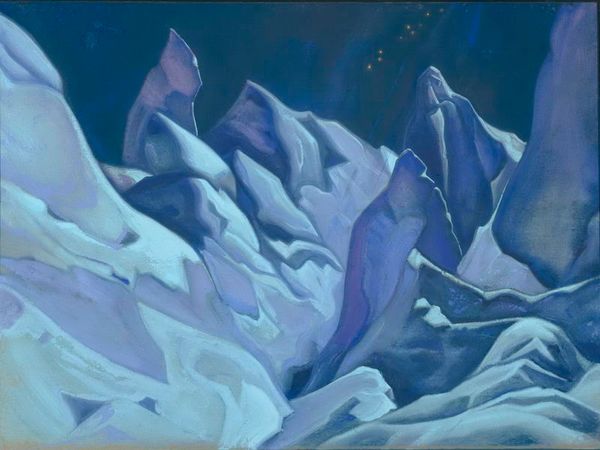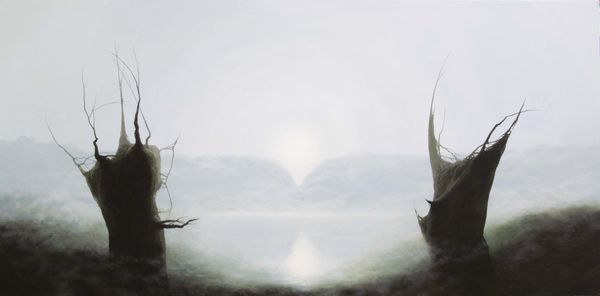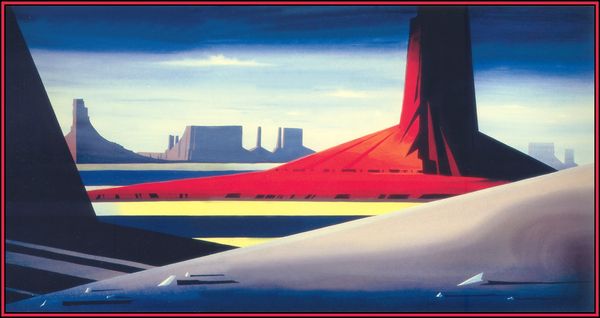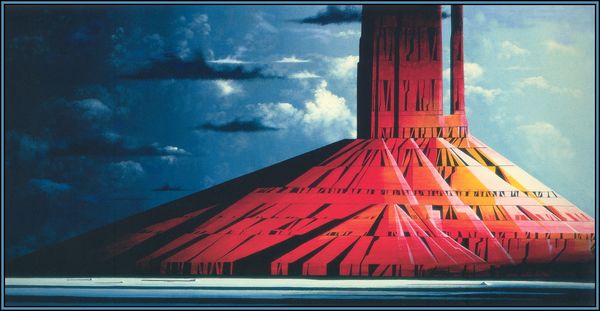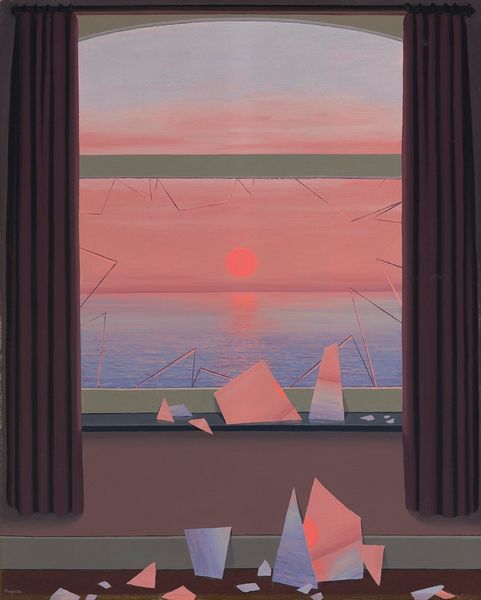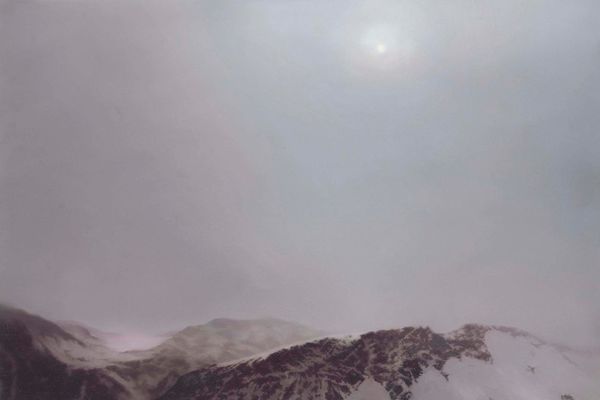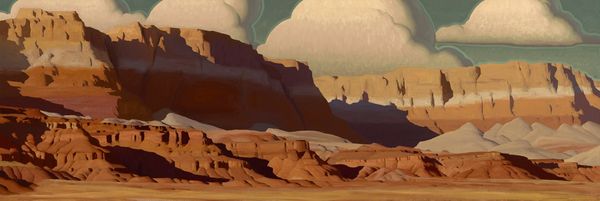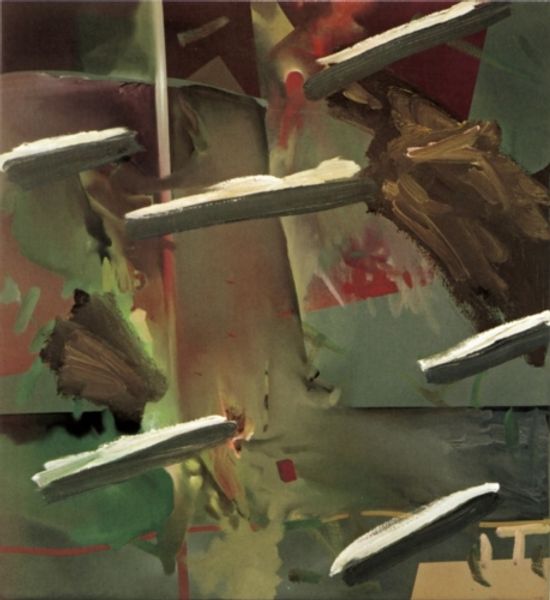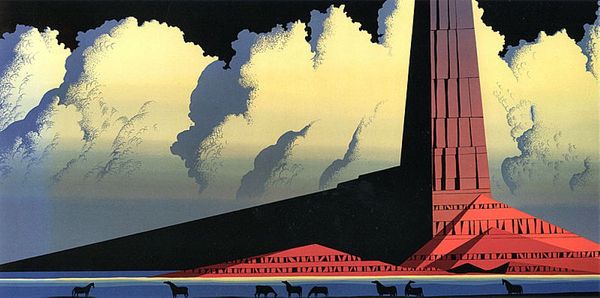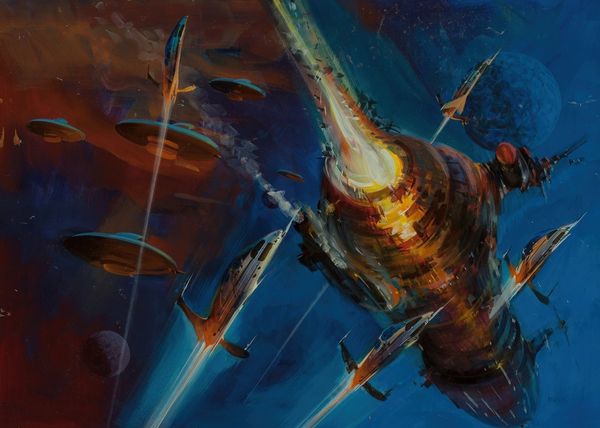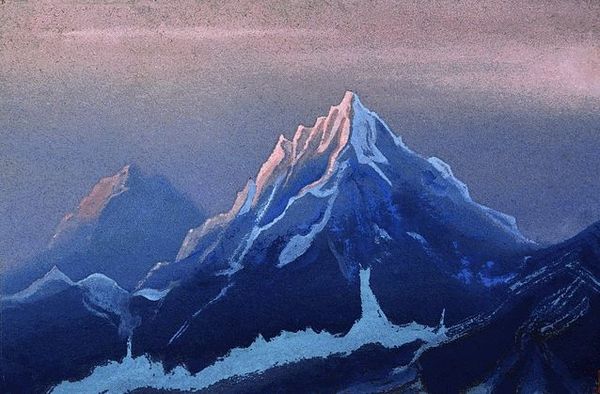
Copyright: Eyvind Earle,Fair Use
Curator: So, we're looking at "Silent Thunder," painted in 1986 by Eyvind Earle. It's an acrylic work, fairly characteristic of his distinctive landscape style, combining romanticism with a touch of the geometric. Editor: Woah, okay, so right off the bat, the vibe I’m getting is… other-worldly. It’s peaceful, but almost unsettlingly so. Like, what kind of thunder happens silently? Makes you think, right? Curator: It does indeed. Earle’s landscapes often juxtapose tranquility with underlying tension. He came into his own as an artist by creating the backgrounds of several Disney animated pictures like 'Sleeping Beauty'--this tension could well come from working within those boundaries, where the beautiful can be so often sinister. The crimson mountain dominates. Editor: That mountain! It feels less like a natural formation and more like some kind of monolithic structure, maybe some ancient beacon, don't you think? The sharpness contrasts with the dreamy softness of those clouds. Speaking of which, those clouds look like frozen waves, too, like time is suspended. Curator: That geometric aspect is typical of his style, but you’re right, the rigid form also evokes a monumentality – perhaps speaking to something powerful that shapes even nature itself. Earle, notably, enjoyed quite a long relationship with public exhibition; his Christmas card designs for UNICEF helped bring a new perception of the sublime right into people’s homes. Editor: Ah, that human touch point is great to remember! Maybe there is something of our shared heritage he's trying to conjure... Still, that peak. It just begs questions: Who built it? What does it signify? Is it a warning? A memorial? I am totally drawn to the way that he manages to have a few tiny details - look at those horses! - bring forward these colossal ideas! Curator: Yes, Earle played skillfully with scale and perspective, embedding suggestions within a framework of the picturesque. This piece also presents interesting insights regarding patronage. He found immense freedom in serigraphy commissions where fine art production entered more commonplace domains. Editor: I dig it. He takes grand Romanticism and then uses commonplace imagery like landscapes as a trojan horse to reach a broader audience! Anyway, I definitely get the romantic spirit, the way nature looms large and sort of dwarfs any human presence. This one’s got me properly thinking today, in the way good art should! Curator: And for me, it’s thinking about the cultural space it carves. How this art has been a very accessible kind of challenging to ideas around romantic art that were elitist up to his emergence, how powerful!
Comments
No comments
Be the first to comment and join the conversation on the ultimate creative platform.
